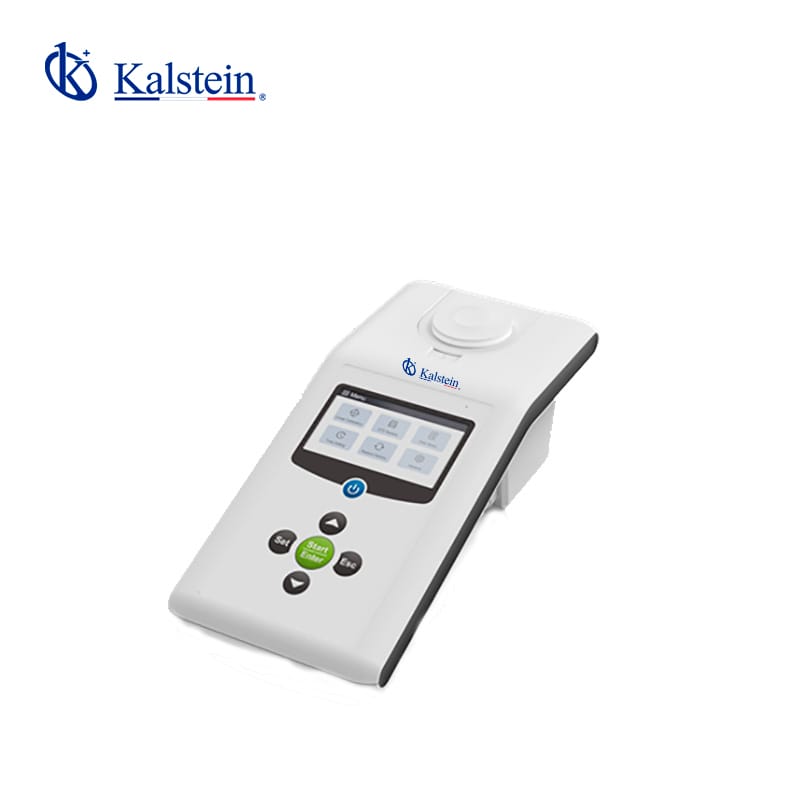The turbidity meter is an essential tool in many laboratories, especially those dedicated to research and clinical analysis. This device measures the amount of suspended particles in a liquid, providing crucial data for a variety of applications. Improved clinical outcomes and diagnostic accuracy are just some of the key benefits of using a high-quality turbidity meter.
In this article, we will delve deeply into the different aspects of turbidity meters for laboratories. From their design and functionality to their impact on clinical results, each section will offer a detailed view to help laboratory professionals make informed decisions.
Design and Construction of the Turbidity Meter
The design of a turbidity meter is fundamental to its efficient and accurate operation. Most of these devices are built with durable, corrosion-resistant materials, ensuring a long lifespan and minimal maintenance. Additionally, modern turbidity meters typically include easy-to-read digital displays and intuitive user interfaces that facilitate their operation.
The quality of construction also directly affects the device’s accuracy. A well-designed turbidity meter minimizes noise and interference in measurements, which is crucial for obtaining reliable data. Advances in sensor technology and engineering of these devices have led to greater diagnostic accuracy, which in turn contributes to improved clinical outcomes.
Functionality and Use in the Laboratory
The functionality of a turbidity meter goes beyond simply measuring the turbidity of a sample. These devices often come with additional features such as data storage capacity, connectivity with computer systems, and options for automatic calibration. These additional functionalities are essential for integrating the turbidity meter into laboratory workflows and ensuring the consistency and accuracy of results.
In a laboratory setting, ease of use is crucial. Turbidity meters must be easy to operate and maintain, with clear instructions and a design that minimizes user error. The automation of certain processes, such as calibration and data logging, helps reduce the time and effort needed to operate the device, allowing laboratory technicians to focus on analyzing and interpreting data.
Diagnostic Accuracy and Improved Clinical Outcomes
Diagnostic accuracy is one of the most important aspects of any laboratory instrument, and turbidity meters are no exception. These devices must offer precise and repeatable measurements to be useful in clinical and research applications. The accuracy of a turbidity meter depends on several factors, including the quality of the sensors, the device’s design, and the calibration procedures used.
Improved clinical outcomes are a direct consequence of diagnostic accuracy. When the data obtained is accurate and reliable, doctors and scientists can make informed decisions about treatment and research. This not only enhances patient care quality but also accelerates the advancement of clinical research.
Comparison of Models and Brands
There are numerous models and brands of turbidity meters on the market, each with its own advantages and disadvantages. When comparing these devices, it is important to consider factors such as accuracy, ease of use, additional features, and cost. Some models may offer higher accuracy and a broader range of features but at a higher price, while others may be more affordable but less accurate.
Renowned brands in the field of turbidity meters include Hach, LaMotte, and Thermo Fisher Scientific. These manufacturers have an established reputation for producing high-quality devices that meet industry standards. When choosing a turbidity meter, it is essential to review the technical specifications and user reviews to ensure that the selected device meets the laboratory’s specific needs.
Maintenance and Calibration
Regular maintenance and calibration are essential to ensure that a turbidity meter functions correctly and provides accurate measurements. Most devices come with detailed instructions on how to perform routine maintenance, which may include cleaning optical parts, checking sensors, and updating software.
Calibration is another crucial aspect of maintenance. Turbidity meters must be calibrated regularly using known turbidity standards to ensure accurate measurements. Some modern devices include automatic calibration functions that simplify this process and reduce the possibility of human error. Proper maintenance and calibration not only prolong the device’s lifespan but also ensure diagnostic accuracy and improved clinical outcomes.
Future of Turbidity Meters in the Laboratory
The future of turbidity meters in the laboratory is promising, with continuous technological advancements improving their accuracy and functionality. Innovations in sensors, miniaturization of components, and integration with data management systems are leading to more efficient and user-friendly devices. These advances not only enhance diagnostic accuracy but also allow for greater flexibility and adaptability in modern laboratories.
Additionally, the growing demand for improved clinical outcomes is driving the development of more sophisticated turbidity meters. These devices must not only provide accurate measurements but also seamlessly integrate into laboratory workflows and provide real-time data for quick and efficient analysis. As technology continues to advance, turbidity meters will remain an essential tool in clinical research and diagnosis.
Conclusion
Turbidity meters for laboratories are vital tools that offer diagnostic accuracy and improved clinical outcomes. From their design and construction to their functionality and maintenance, every aspect of these devices contributes to their effectiveness and utility in the laboratory.
When choosing a turbidity meter, it is crucial to consider factors such as accuracy, ease of use, and additional features, as well as maintain a regular maintenance and calibration schedule. With continuous technological advancements, the future of turbidity meters is bright, promising more efficient and accurate devices that will continue to enhance the quality of research and clinical care.
Are you yearning for top-tier medical equipment, ready to enhance the efficiency of your laboratory? Visit https://kalstein.de/category-product/laboratory-line/turbidity-meter/ to explore our high-end catalog, packed with the best finds at the most competitive prices. Excellence marks our brand, we innovate and manufacture high-precision equipment, both reliable and durable to meet your needs. Why wait? Make your quick and secure online purchase, take the leap towards the future of medical technology today. https://kalstein.de/

